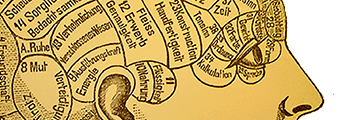Twelve Examples of Illusion
Full Title: Twelve Examples of Illusion
Author / Editor: Jan Westerhoff
Publisher: Oxford University Press, 2010
Review © Metapsychology Vol. 14, No. 50
Reviewer: Sascha Benjamin Fink, M. A.
This is not a review you are reading. This is the illusion of an external text that an illusion of a self appears to read. Illusions run deep, don’t they? It is Westerhoff’s accomplishment to guide our awareness towards these omnipresent and unnoticed illusions surrounding us in an admirably effortless way.
Twelve Examples of Illusion is a truly entertaining and light read. The book takes its cue from a listing of 12 examples of illusion in an 18th century Tibetan encyclopedia: Magic, The Moon in the Water, Visual Distortion, Mirages, Dreams, Echoes, The City of Gandharvas, Optical Illusion, Rainbows, Lightning, Water Bubbles, A Reflection in A Mirror. The variety of illusions provides a jumping board to revive ancient Buddhist philosophy of mind and metaphysics with modern scientific insights. The result is thought provoking at best, most often insightful, and entertaining at worst.
The chapters on mirages, distortions, optical illusions, rainbows and mirrors oscillate between the cultural impact of these examples in the philosophy, literature and art of Buddhism on the one, and explanations from optics and vision studies on how these illusions come about on the other hand. In some chapters, like those on rainbows, echoes and lightning, the illusions elucidate how our mind creates false ontologies of the world, and how impotent we are to overcome them: even my knowledge that I am the source of the sound of the echo does not allow me to locate it at my position – it still seems as if somebody on the other end of the valley is mocking me. The chapter on the City of Gandharvas has surprised me the most: Westerhoff connects the Tibetan myth of a city above the clouds with discussions on the semantics and ontology of fictions in analytic philosophy. Why is this an illusion? Because we sometimes take fictions for facts – or why else did the Prince of Wales write to Sherlock Holmes? Other chapters focus more on Buddhist philosophy alone, like the one on water bubbles. As divers as illusions are the subjects intertwined by Westerhoff.
The book is a light read due to the inviting style and the high amount of illustrations. Twelve Examples of Illusion is a treat for the general reader and will be interesting for historically interested philosophers of mind and cognitive scientists alike as well as those who like their Buddhism alive and kickin’. The book has, however, some flaws: working with it is hard due to the endnotes. This becomes especially annoying once one is interested in the illustrations: information is provided only to the photographs but not to what is depicted, e.g. who painted a picture, or where and when it was produces. Granted, if the picture is of a water bubble (whose caption reads “Water bubbles” — in case you didn’t get it right away) the time of creation may be unimportant, but if it comes to remarkable painting of the king of the Gandharvas, I would appreciate this information. Therefore, a caveat goes out to academic readers: analytic philosophers might miss rigid arguments, and cognitive scientists might think of the science in it as a little dusty: all but one experiment date before 2000, and none is critically discussed. To be fair though, that is not the aim of the book: it is written from a Buddhistic perspective, explaining and elucidating this important theory of mind and world, and it does so inspiringly. This is not an illusion of my illusionary self, trust “me”
© 2010 Sascha Benjamin Fink
Sascha Benjamin Fink, M. A., Institute for Cognitive Science, University of Osnabrück, Germany

